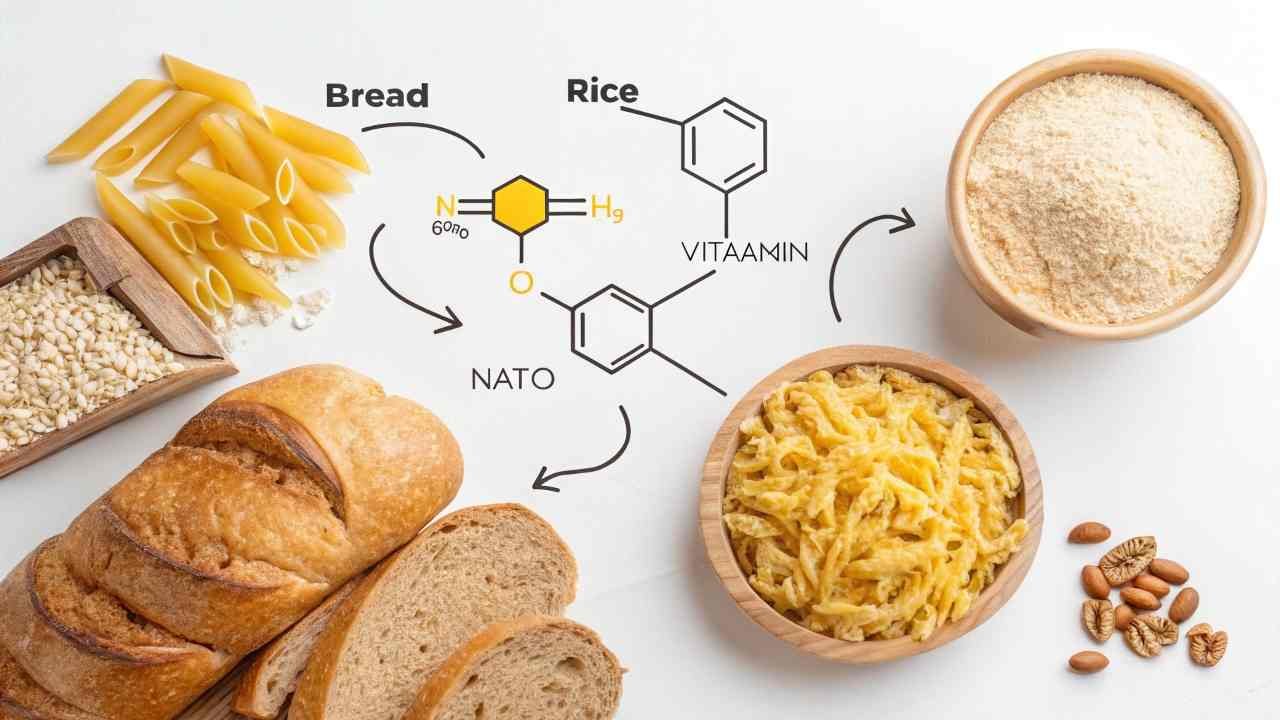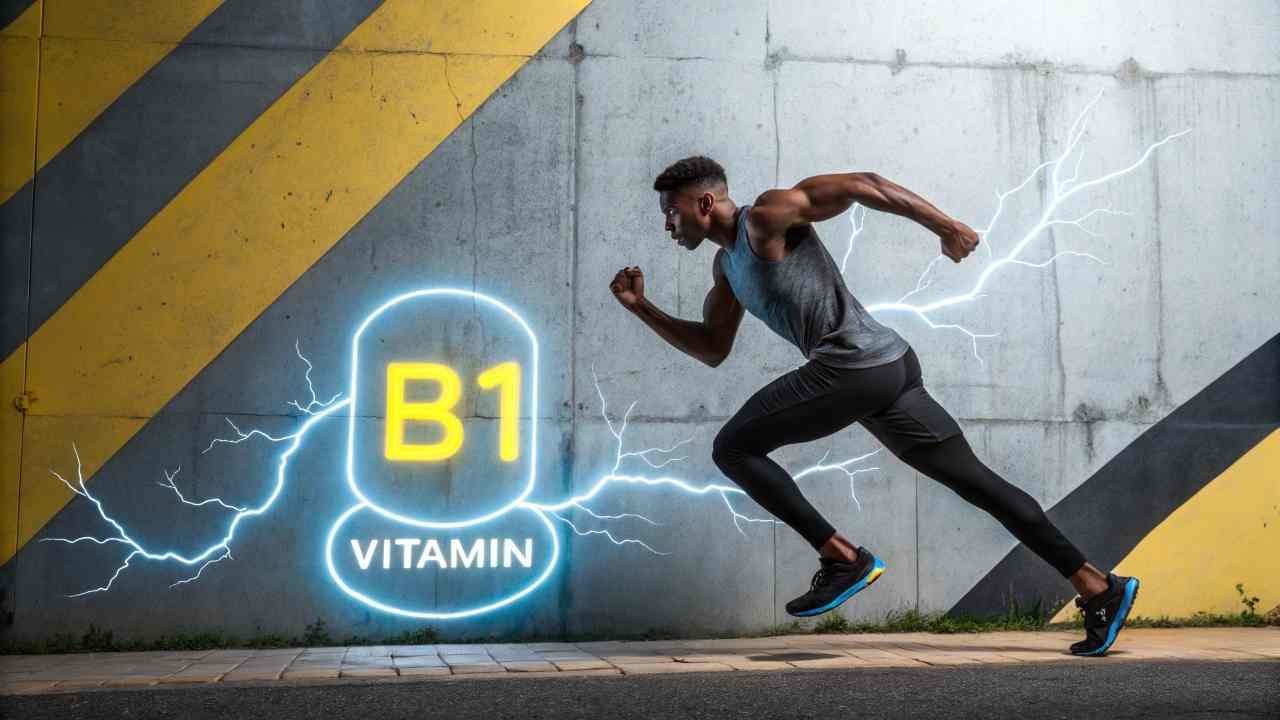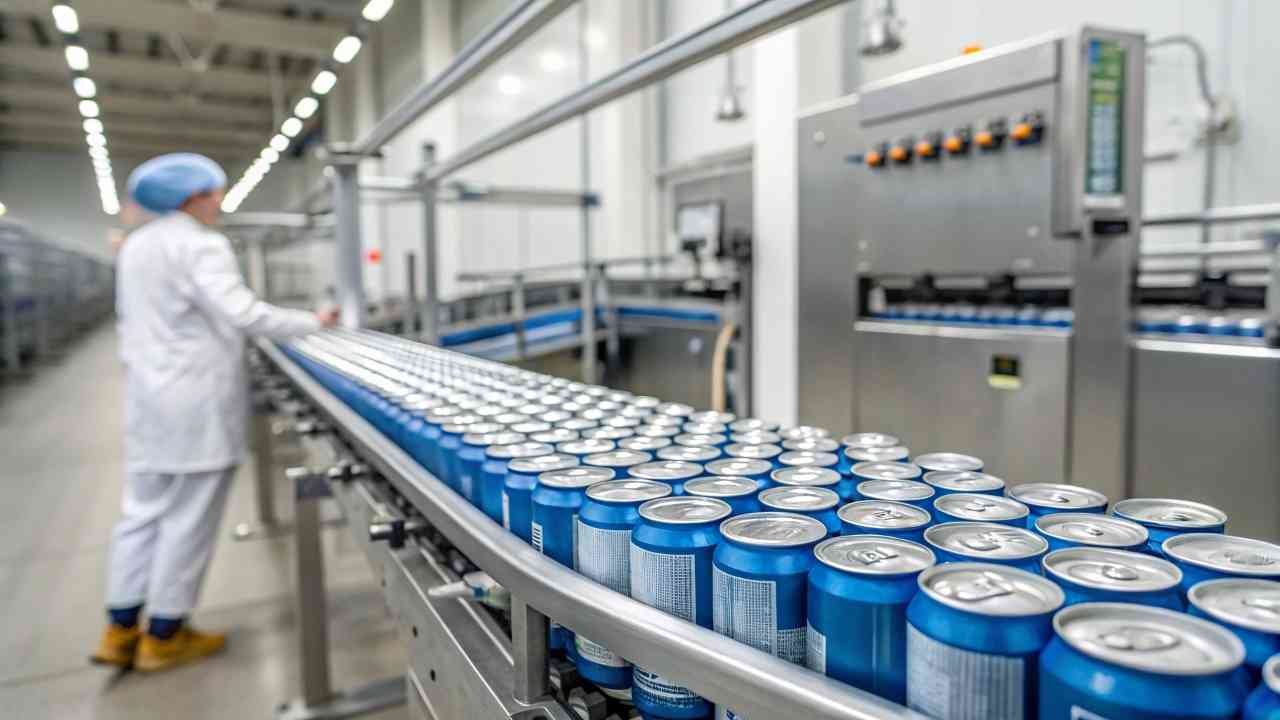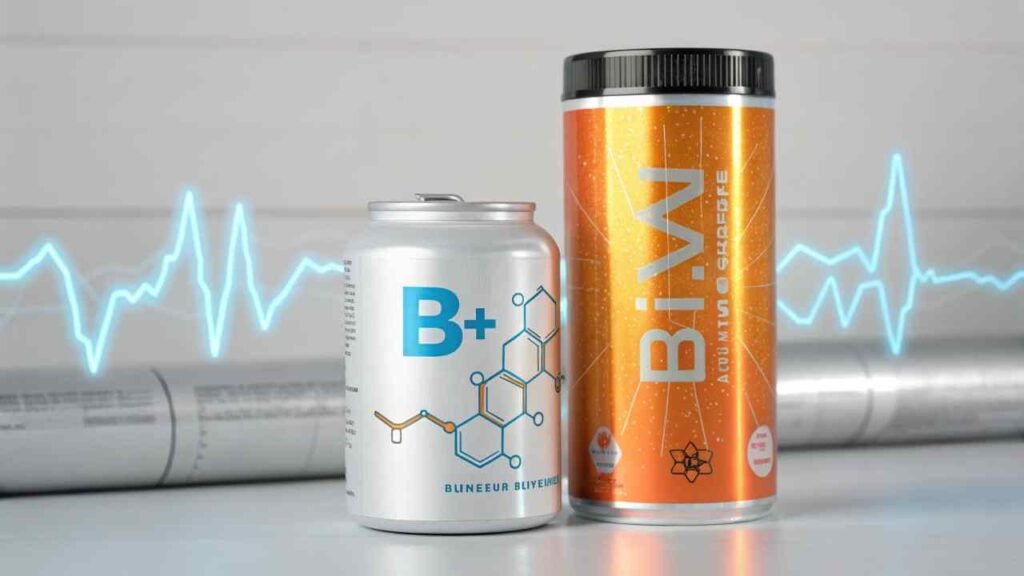See Vitamin B1 in energy drinks? Wonder why it's there? Let's quickly look at why thiamine is a popular addition to these products.
Vitamin B1 (thiamine) is key for turning carbs into energy. Products use it to claim better energy, metabolism, and performance, meeting consumer demand for these benefits.
At FINETECH, we supply vitamins like B1 for functional foods. Understanding its role in energy products is important. Let's briefly cover why it's so common.
How does Vitamin B1 contribute to the perceived energy boost from these products?
Feel more energy from a B1 drink? How does it work? Let's quickly see B1's link to energy.
B1 helps convert food (carbs) into energy (ATP). It doesn't give energy directly but helps your body unlock it from your diet, reducing fatigue if you're low on B1.

Vitamin B1 isn't a stimulant like caffeine. It's a helper (coenzyme TPP1) for enzymes that break down carbs into ATP (cell energy). If B1 is low, energy production from carbs suffers, causing fatigue.
Adding B1 to drinks with carbs helps ensure your body can efficiently process that fuel. If you were low on B1, you might feel a real energy improvement. It supports energy metabolism2 rather than providing a direct jolt. The immediate "kick" in energy drinks usually comes from sugar and caffeine; B1 helps with sustained energy from the carbs.
B1's Energy Role:
| How B1 Helps | Effect Felt |
|---|---|
| Aids Carb-to-ATP Conversion | Enables efficient energy production |
| Corrects Potential Low B1 | Reduces fatigue from poor energy use |
| Supports Fuel Use | Better processing of sugars in drink/diet |
What is the scientific rationale for including Vitamin B1 in pre-workout or athletic formulas?
Why is B1 in sports drinks? Do athletes need extra? Let's check the science for thiamine in athletic formulas.
Athletes have higher energy needs and carb use. Vitamin B1 is crucial for this increased metabolism, supporting muscle energy, endurance, and potentially recovery by optimizing ATP production.

Exercise demands more energy (ATP), mainly from carbs. B1 (as TPP) is essential for enzymes in carb metabolism3. Athletes might also turn over B1 faster. While B1 itself isn't a direct performance enhancer if levels are already good, ensuring sufficiency is key. Low B1 could limit energy production and hurt performance. It supports efficient energy for muscle work and nerve function needed for coordination.
B1 for Athletes:
| Why It's Included | Benefit for Athletes |
|---|---|
| High Energy Demand | Supports ATP production from carbs |
| Increased Carb Use | Helps process fuel efficiently during exercise |
| Prevents Deficiency Impact | Avoids energy bottlenecks, supports endurance |
Are there quality differences in Vitamin B1 used in mass-market supplements versus specialized products?
Is all Vitamin B1 the same quality? Is cheap B1 different from premium? Let's look at potential differences.
The B1 chemical form (HCl or mononitrate) is often similar. Quality can vary in purity, source (GMO/allergen), added fillers, testing, certifications, and dose accuracy, impacting overall product quality.

The active thiamine molecule is standard. Common forms are thiamine HCl and mononitrate. Differences can arise from:
- Purity: Reputable sources meet pharmacopeial standards (USP, FCC) for low impurities. Lower quality might not. FINETECH ensures this.
- Manufacturing (GMP): Good Manufacturing Practices ensure consistency. Premium brands often highlight stricter GMP.
- Excipients: Fillers/binders can vary in type and quality.
- Source Claims: Specialized products might claim non-GMO or allergen-free, usually at higher cost.
- Testing/Certification: Premium brands may do more third-party testing (e.g., NSF for Sport).
Quality Factors:
| Factor | Mass-Market Focus | Premium Focus |
|---|---|---|
| Purity | Meets basic standards | Stricter limits, tested |
| GMP | Standard adherence | Higher levels, certified |
| Source Claims | Often unspecified | Non-GMO, Allergen-free etc. |
| Testing | Basic QC | Third-party verification |
While the B1 is the same, the overall product quality and trust can differ.
How do manufacturers ensure the stability of Vitamin B1 in liquid formulations like energy drinks?
Is the B1 in your drink still good? How is it kept stable? Let's see the methods.
Manufacturers use stable B1 forms, keep pH acidic (B1 is more stable), minimize heat, use protective packaging (light/oxygen proof), and sometimes add chelators or antioxidants. Overages are common.

B1 degrades with heat, light, oxygen, and high pH. Sulfites also destroy it. Energy drinks are often acidic, which helps.
Strategies include:
- Stable Forms4: Thiamine HCl or mononitrate.
- Acidic pH: Maintained below 5, ideally 3-4.
- Gentle Heat: HTST pasteurization is better than long heating.
- Protective Packaging5: Cans or dark bottles block light/oxygen.
- Overages: Extra B1 added to account for loss during shelf life.
Stability Methods:
| Method | How It Helps B1 Stability |
|---|---|
| Acidic pH | B1 more stable at low pH |
| Gentle Heat | Reduces degradation during processing |
| Good Packaging | Protects from light/oxygen |
| Overages | Ensures label claim over time |
These steps help maintain B1 potency in drinks.
What consumer demands are driving the inclusion of Vitamin B1 in these product categories?
Why do consumers want B1 in these drinks? What's driving this? Let's look at consumer needs.
Consumers link B-vitamins (like B1) with energy, less stress, and better mental/physical performance. Demand for "clean energy," brain support, and general wellness fuels its use.

Consumer perceptions and trends drive B1's popularity:
- Energy Association: People connect B-vitamins to energy metabolism, even if they don't know the exact science.
- Cognitive Benefits: B1's nerve role makes it seem good for focus and brain health.
- Stress & Wellness: B-vitamins are generally seen as good for stress and overall health. Fortification appeals.
- Active Lifestyles: Athletes and active people look for ingredients supporting performance and energy.
Consumer Drivers:
| Demand | B1's Perceived Role |
|---|---|
| Energy / Less Fatigue | Helps convert food to energy |
| Mental Focus / Brain Health | Supports nerve function |
| Stress Reduction / General Wellness | B-vitamin "halo effect" for well-being |
| Active Performance | Supports higher metabolic needs |
These demands make B1 a popular ingredient.
Conclusion
Vitamin B1 is a popular energy product ingredient due to its vital role in energy metabolism, appeal to active consumers, and meeting demands for energy and cognitive support.
-
Discover the significance of coenzyme TPP in energy production and how it aids in breaking down carbohydrates effectively. ↩
-
Learn about energy metabolism to understand how your body processes nutrients for sustained energy, crucial for overall health. ↩
-
Exploring carb metabolism can reveal strategies for enhancing athletic performance through nutrition. ↩
-
Understanding stable forms of Thiamine can help in formulating effective energy drinks that maintain vitamin integrity. ↩
-
Learning about protective packaging can help in choosing the right materials to preserve energy drink quality. ↩


